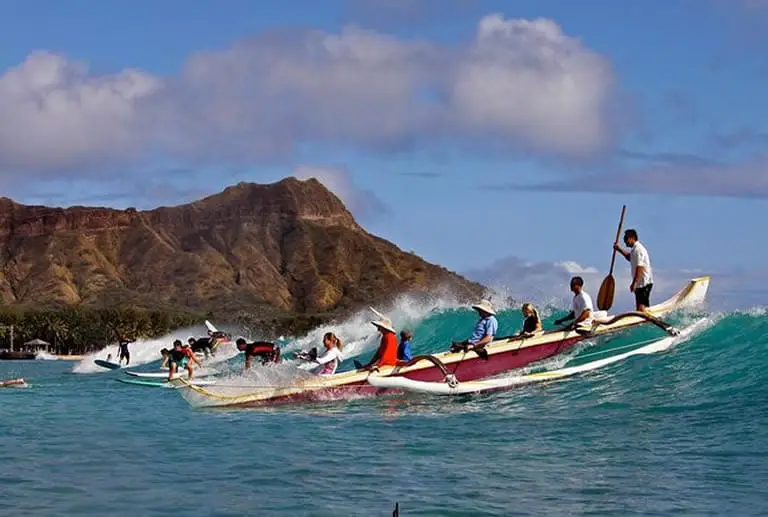Contents
What an outrigger is
So, an outrigger is attached to the canoe to give it extra stability and buoyancy but what exactly is an outrigger.
What is an outrigger?
An outrigger is a narrow, long, and sturdy frame made from a buoyant material which is attached to the side of a boat to give it extra stability.
Outriggers can be made from any type of material.
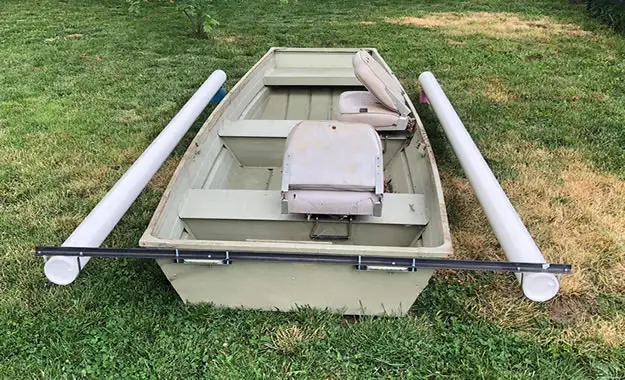
Modern outriggers can be made from hollowed plastic tubes but traditionally, and in many parts of the world today, outriggers are usually made from wood or bamboo.
The outrigger frame is positioned rigidly and parallel to the main hull of a boat.
Think of an outrigger as a stabilizer for a boat.
In the same way stabilizers can be attached to each side of a child’s bicycle to give it stability, outriggers are attached to the side of a boat for the same reason.
You may be wondering why supplement a canoe with an outrigger if one can just use a stabilized boat with one of the aforementioned hull designs.
The answer is to simply add even more stability to the boat.
Outrigger boats & their advantages
Most outrigger boats have been modified to make them outrigger boats.
What is an outrigger boat?
An outrigger boat is a small vessel that has been modified with outriggers (stabilizers) at one or both of its sides.
These outriggers are attached in an attempt to prevent the boat from tipping over.
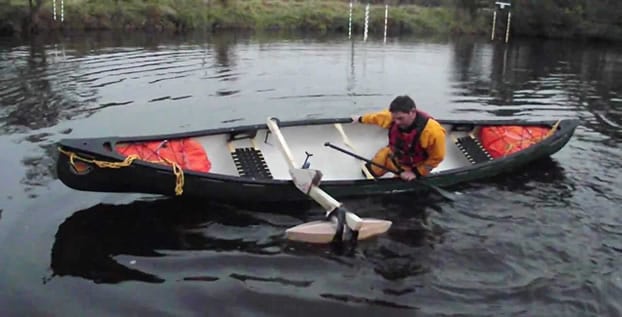
Although you may see outriggers on personal utility vessels, like those put on a Jon boat to stabilize it, they are most often found on canoes.
The most common type of outrigger boat is the canoe
Most canoes are fairly easy to tip. This is especially the case when they are being crewed by beginners.
An outrigger canoe is a great way to stabilize the boat while learning how to paddle it.
Outrigger canoes have also been used traditionally by many native tribes in America and its territories to travel and fish in open ocean waters.
But what is an outrigger canoe?
An outrigger canoe is a normal canoe that has buoyancy supports attached to it at one or both sides.
These supports run parallel to the main hull of the boat.
The outrigger attachments give the canoe improved stability and extra buoyancy.
A single outrigger canoe has just one outrigger attached to only one side of the boat while a double outrigger canoe has a separate outrigger attached to each side.
An outrigger canoe is a canoe that has one or two buoyancy supports attached to its side.
These are often referred to as canoe outriggers.
While a normal canoe can have a hull characteristics that are specifically designed to help aid its balance and stability, like the flat bottom in a calm water canoe, an outrigger canoe mainly relies on its outrigger support for extra buoyancy.
The major reason for attaching an outrigger to a canoe is to give a balancing aid to the main hull of the boat.
It is a fact that traditional canoes needed outriggers due to the absence of modern hull designs and the newly developed boat stabilizers such as fins.
2 types of outrigger canoes
Although any type and style of canoe can be fitted with outriggers, from flat bottom canoes to semi-v hull canoes, there are only two types of outriggers; single and double.
We can therefore say that there are only two types of outrigger canoe.
Though canoes fitted with outriggers may have vastly different hull designs they will fall into only one of two categories:
- Single outrigger canoe.
- Double outrigger canoe.
The single outrigger canoe
A single outrigger canoe is a canoe with only one outrigger fitted to it.
The single outrigger is attached to the main hull of the boat usually on the left side.
The purpose of this is to aid the canoe’s stability.
The position of the paddler is always on the opposite side of the outrigger to avoid capsizing.
Single outrigger canoes are the most commonly seen type of boats in the remote islands of the Pacific.
But these boats can also be observed in the waters of Madagascar, Oceania, Micronesia, and Polynesia.
A single outrigger, also referred to in the Pacific islands as ama, is constructed using a cut piece of Koa tree.
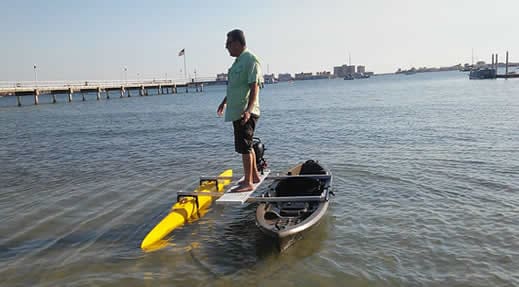
Although the use of single outrigger canoes only survived in some islands of the Pacific, these boats have also reached the shores of Southeast Asia.
A study conducted by the University of Southampton revealed that single outrigger boats were also once used in the Philippines for fishing activities.
Fishermen in this region found that a boat with just one outrigger allowed them to work with fishing nets on the other side of the vessel.
This has been a practice for many years until it gradually disappeared due to the rising need for faster fishing boats.
The double outrigger canoe
A double outrigger canoe is a canoe that has an outrigger attached to both sides of the boat.
The double outrigger canoe is the dominant watercraft used in the Southeast Asian coastal islands.
The presence of two outrigger floats latched across the main hull of the vessel is a common characteristic of this type of canoe in the region.
Unlike a single outrigger canoe, which is commonly smaller in size, a double outrigger canoe is larger and can usually hold a few people.
These boats are often used for transportation
The smaller type of double outrigger canoe is more commonly used for local fishing activities.
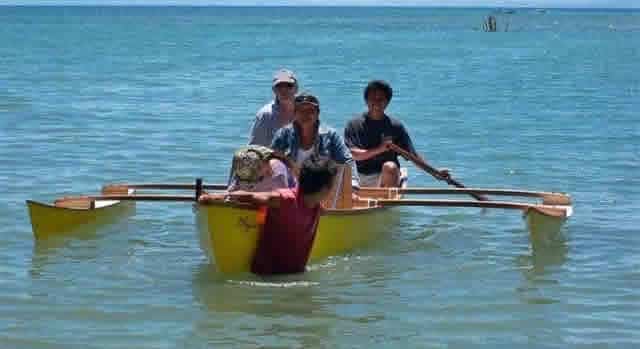
Many fishermen in Southeast Asia will use a small double outrigger canoe because these boats are stable, light, cheap to build and efficient on the water.
The bigger type of outrigger canoe is mainly utilized for water-based tourism activities and medium scale fishing and trading.
As an example, tour operators in the islands of Palawan, Philippines, rely on the relative cheapness and sturdiness of the bigger double outrigger boats to carry tourists from point to point.
Meanwhile, medium scale fishing activities, which are a huge part of the economies in Southeast Asia, have been employing the use of larger outrigger boats to carry out multi-day fishing trips.
Bigger boats mean they can store a large volume of catch.
Brief history of the outrigger canoe
Many people in the Pacific islands have been using outrigger canoes for centuries.
Situated on islands with great abundance of trees, these people discovered that a small boat can be made out of a tree trunk.
The people from this region also needed more stability, speed and better steering for this type of small boat, hence the development of outriggers.
Through the years, outrigger canoes became one of the most essential means for sea travel and local fishing activities in the Pacific region.
In the present, outrigger canoeing has already developed to a strong water sport culture in Hawaii.
In Southeast Asia, outrigger canoes or bangkas remain the most-used watercraft for traveling from island to island, also widely utilized for water-based tourism activities.
Traditional outrigger canoes
We have mentioned that outrigger canoes in the remote islands of the Pacific mainly used single outrigger floats.
The design of these boats was constructed particularly due to the harsh terrains of the islands, the volcanic lava rock formations and steep cliffs.
In Ancient Hawaii, the primary materials for single outrigger canoes was an old Koa tree for the main hull and the outrigger, a mixture of plants and charcoal for waterproofing, and coconut husk fibers for the lashes.
The construction of single outrigger canoes in Hawaii was different from how canoes were built in areas of Madagascar, Polynesia and Micronesia.
The differences include which trees were used and the cultures behind the construction.
The earlier configurations of boats, specifically the double outrigger canoes, from Southeast Asia featured materials from pieces of bamboo for the outrigger and timber for the main hull.
Modern outrigger canoes
Local fishermen in Southeast Asia, more commonly in the Philippines, still use outrigger canoes and still use the traditional materials for building outrigger canoes due to the inexpensive cost of its materials and construction.
Filipino fishermen source their canoe materials from local forests.
Pieces of wood for the main hull, stalks of bamboo for the outriggers and nylons for the lashing are the most common elements.
Unlike in the commercial fishing industry, local fishermen rely on their own to build or buy a boat that possesses abilities to be both stabilized, fast, and efficient.
However, due to the recent advancement of boat construction, the relatively low price of fiberglass and the decreasing number of trees, many of these fishermen are starting to employ more modern materials, like carbon fiber, for building outrigger canoes.
Nowadays, many canoes are built with different hull designs.
These designs can be in the form of shallow-v, shallow arch, flat bottom, or round bottom.
All these types can be fitted with one or more outriggers.
The role of an outrigger on modern canoes is best described by its importance in boat racing and local fishing activities.
Outrigger boats used in racing
Though it is not uncommon to see an outrigger attached to a recreational canoe you are much more likely to see one attached to a racing canoe.
Outrigger canoe racing is an established culture of water sport in the Pacific, and is most most popular in Hawaii.
Hawaiians have preserved the use of outrigger canoes, consequently developing other uses for it like watercraft racing.
Though they do use them for tourist water excursions (see featured image at top of article).
The demand for better performance lead to the construction of modern outrigger racing canoes that are lightweight and fast in the water.
This demand has greatly increased due to heightened competition.
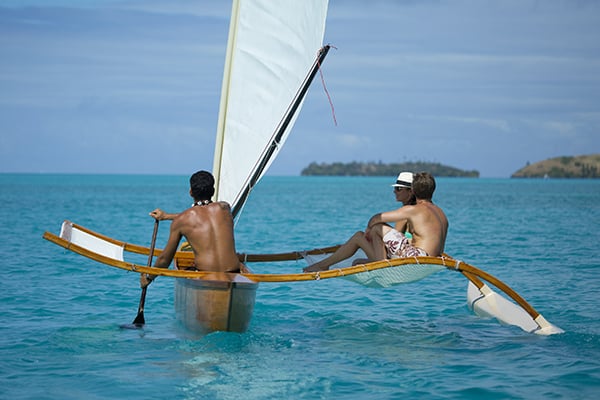
Consequently, the materials for building outrigger canoes have became more complex and the deigns have become more advanced.
The most common modern materials for manufacturing canoes include fiberglass, epoxy adhesives, and carbon fiber.
These materials help outrigger canoes to become faster, lighter, and more versatile.
Outrigger canoes are classified based on the number of hulls used and the number of people paddling, OC1, OC2, OC3, OC4 and OC6 are now considered the modern types of single hull outrigger boats.
While DC12 refers to double hull racing canoes with 12 paddlers.
V1 and V2 (where V means va’a, a Samoan word for canoe) are outrigger boats without a rudder.
These are also used for outrigger canoe racing.
It should be mentioned that small canoes, be it single or double outrigger, are usually only employed in favorable weather conditions, when the waters are relatively calm.
Although the outriggers do offer some protection against waves and weather, a small canoe is not really built for use in very challenging conditions.

